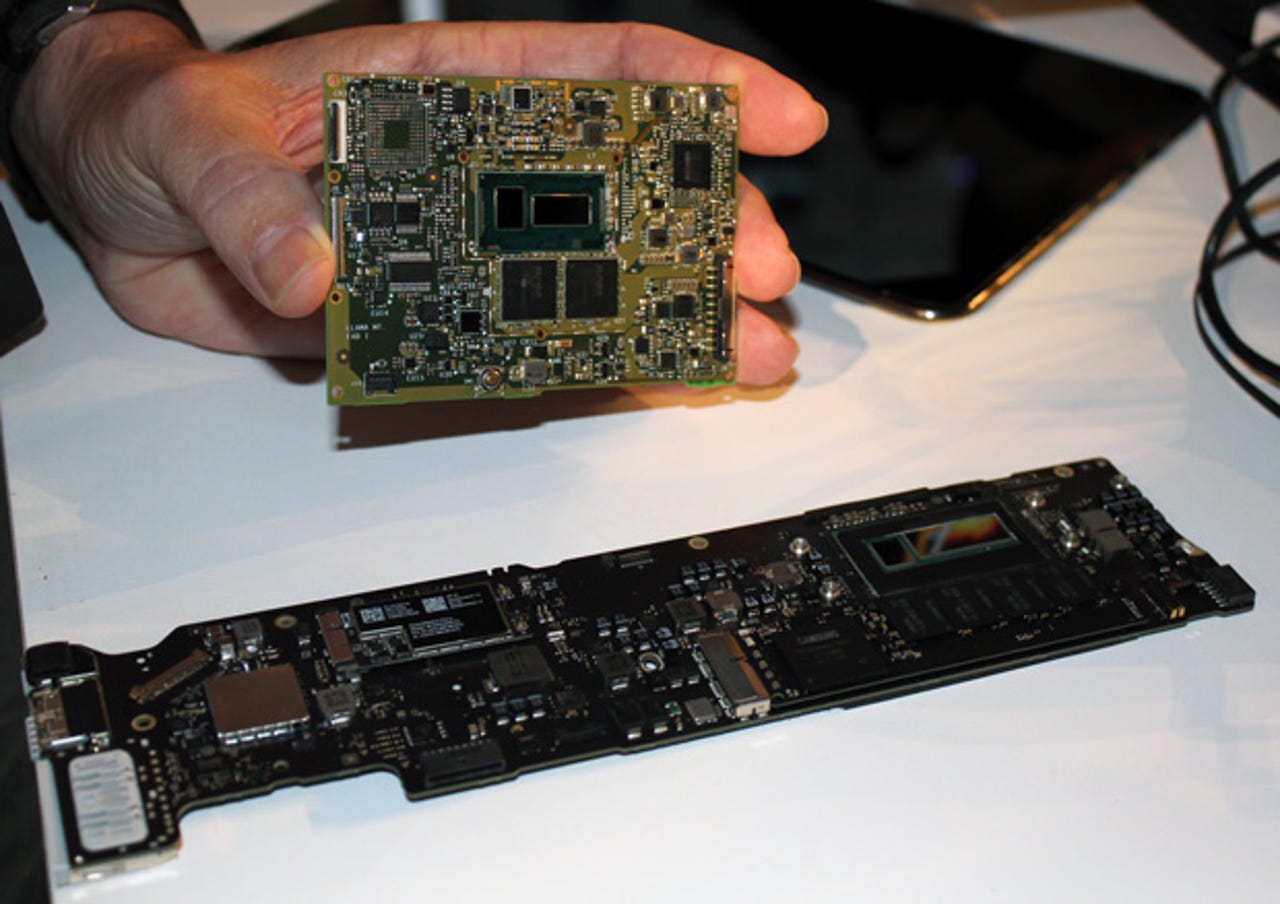Computex 2014: More details on Intel’s Broadwell

Intel’s announcement of its first 14nm Broadwell processors was frustratingly short on details. That’s not too surprising since this wasn’t the actual launch. The first systems won’t even show up until the holidays, and Haswell laptops and desktops will be around for along time, so for now there isn’t much the company can say. Perhaps we’ll get more at the Intel Developer Forum in September, but in the meantime Intel executives did offer a few tidbits throughout the week.
The Core M ultra low-voltage processors will be the first Broadwell processors to ship, arriving in systems in time for the holidays. But as with the current Haswell Core processors, there will also be standard voltage chips for mainstream laptops and desktops. Intel has not said whether these will make it in time for the holidays or slip into 2015. It’s no secret that Broadwell is running behind schedule--it was originally supposed to be in volume production in late 2013. When CEO Brian Krzanich was asked recently why it had slipped, he gave a straightforward answer: creating the industry’s first 14nm processor is “hard.”
The Core M processor is designed specifically for fanless 2-in-1s--either detachables or convertibles. But that doesn’t mean it won’t also find a home in other types of systems. Intel mentioned Ultrabooks, all-in-ones and mini PCs as good candidates for Core M as well.
The biggest mystery with Broadwell is performance and power/battery life. Until the Core M launches, Intel isn’t talking. But company execs did offer a few clues. In her keynote, President Renee James said Core M will deliver 20 to 40 percent better performance than Haswell. She also described it as the “most energy-efficient Core processor in Intel’s history” and said it will reduce power by up to 45 percent with a maximum power rating “well below 10 watts TDP.” In a later session with journalists, Vice President Navin Shenoy, who manages the mobile client platforms, was more specific. He noted that the sorts of fanless designs we’ll see this year require a chip with a TDP of around 5 watts or less. He also said that battery life “will be good,” though it’s worth noting here that Intel’s primary benchmark is Core laptops, not ARM-based tablets, which generally have longer battery life.
The size of the Broadwell Core M motherboard is also pretty remarkable. During its press event, Intel compared it to the Haswell-based motherboard used in the Apple MacBook Air, which is itself an impressive piece of engineering. In comparison, the Broadwell board looks tiny but it includes nearly all of the major system components other than storage. To shrink it down, Intel made the Broadwell chip itself much smaller, packed the memory chips closer together, eliminated any discrete components that weren’t absolutely necessary and stacked other components on top of one another. This may all sound like inside baseball, but it is what will enable Intel’s customers to make much thinner, smaller Core devices.

Finally the early Core M systems look pretty impressive. Intel has two “Llama Mountain” reference designs, a high-resolution 12-inch Windows detachable and a 10-inch Android one; Wistron has a variation on the 12-inch one; and Asus announced the Transformer Book Chi. I got a close look at all of these. At around 7.3mm thick (without the keyboard), they look like competitive tablets--the iPad Air is 7.5mm thick--but with Core-level performance. We’re used to hearing that each new generation of technology is thinner, lighter and more powerful. But these designs do feel like a significant step forward. Time will tell, but it does feel like Intel is inching closer to its vision of “a tablet when you want it, and a laptop when you need it.”